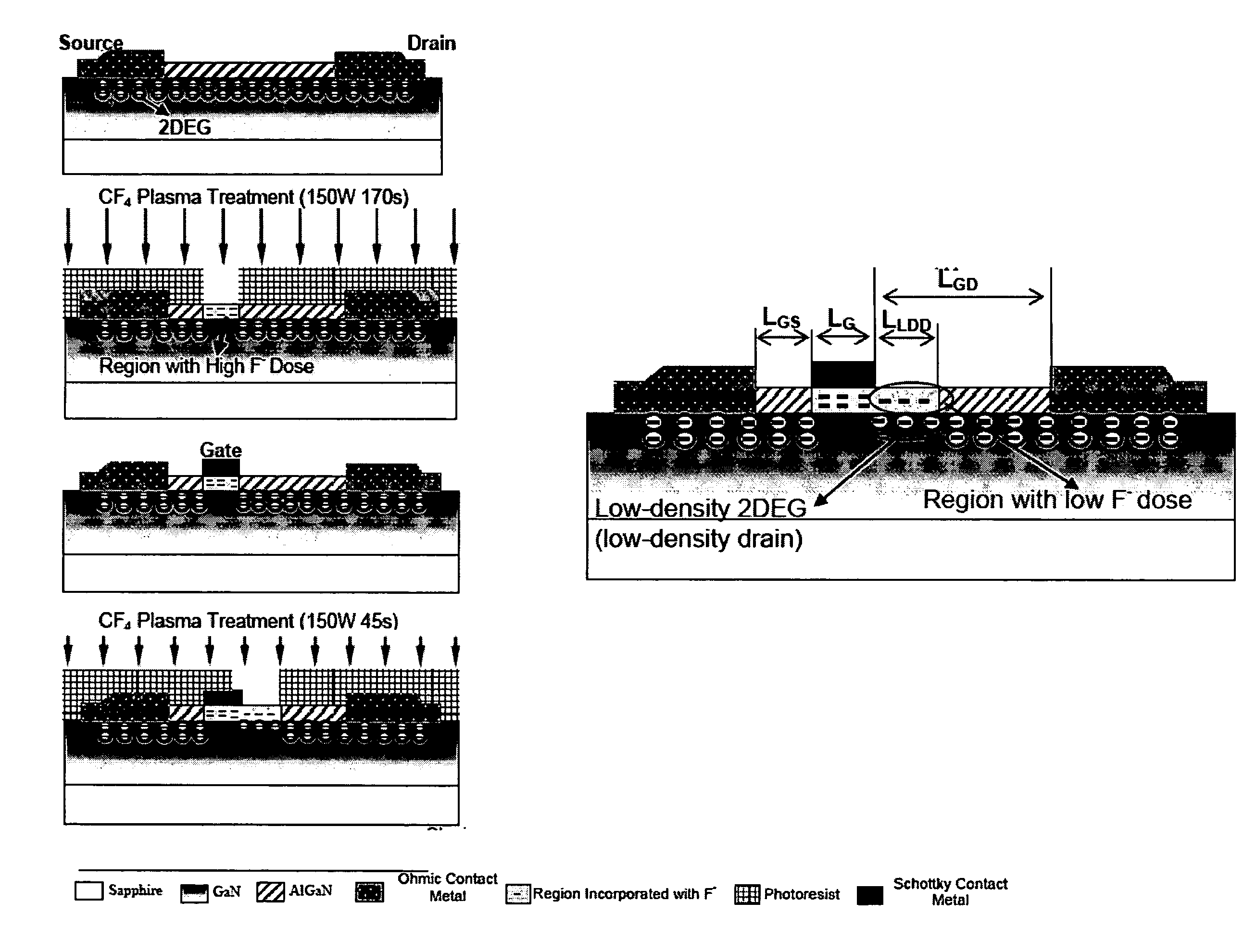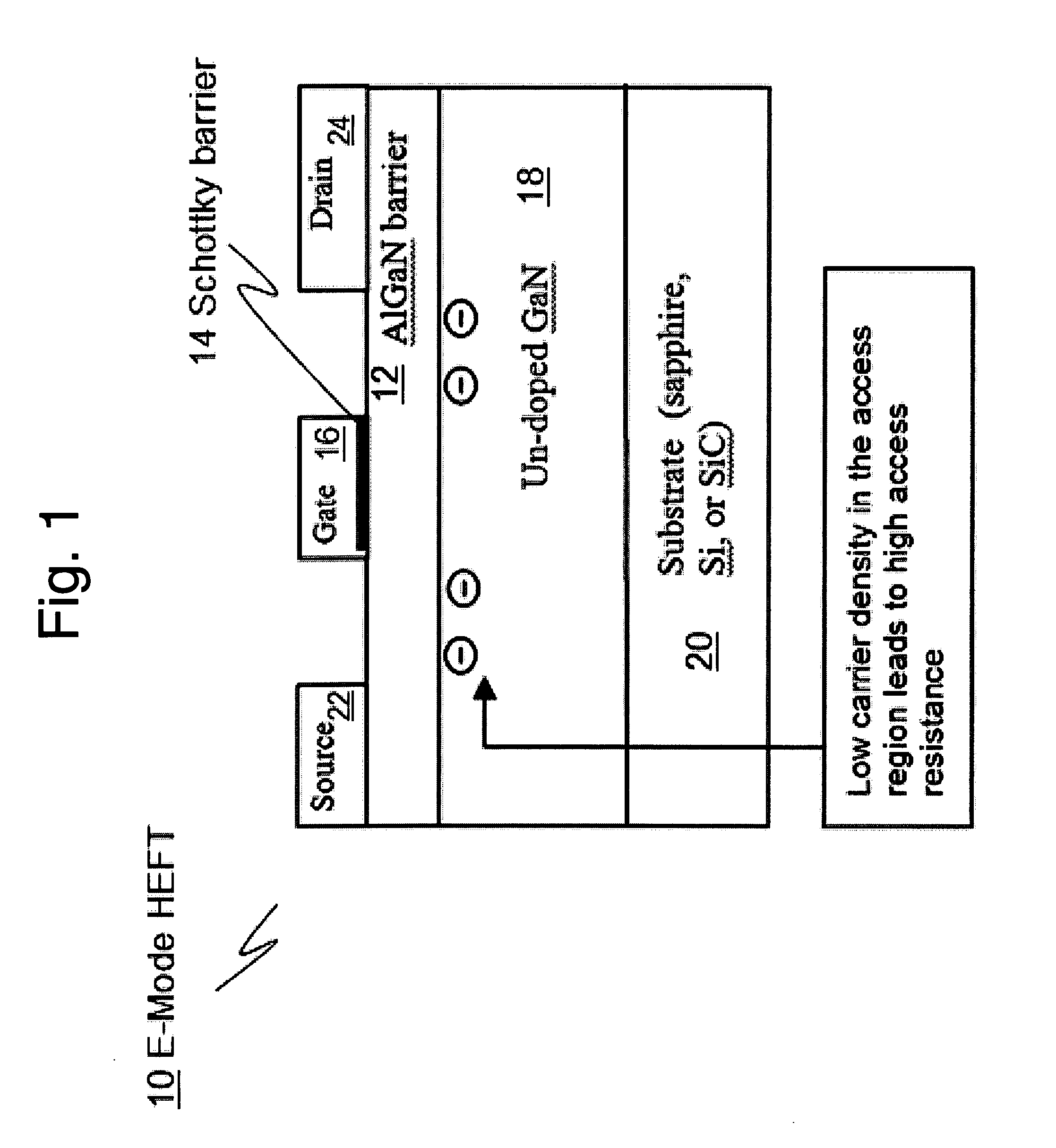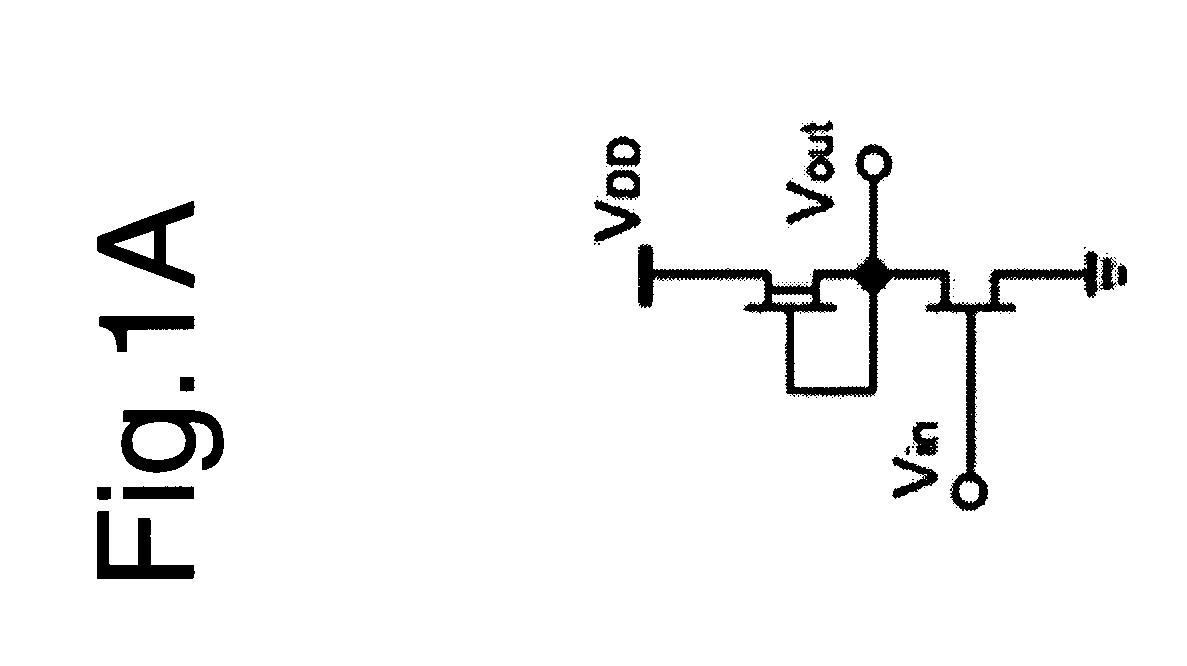Low Density Drain HEMTs
a drain hemts and low density technology, applied in the direction of basic electric elements, electrical apparatus, semiconductor devices, etc., can solve the problems of excessive electric field, uncontrolled conduction, problems in semiconductor devices, etc., and achieve the effect of reducing the maximum drain current, facilitating device safety, and simplifying circuit configuration
- Summary
- Abstract
- Description
- Claims
- Application Information
AI Technical Summary
Benefits of technology
Problems solved by technology
Method used
Image
Examples
example
DCFL Ring Oscillator
[0153]FIG. 1B shows a schematic circuit diagram of a DCFL ring oscillator, which is formed with an odd-numbered E / D inverter chain. Seventeen-stage ring oscillators were fabricated with inverters' β=6.7, 10, and 25. For each ring oscillator, 36 transistors were used including an output buffer. FIG. 1D shows a photomicrograph of a fabricated ring oscillator according to the present innovations. The ring oscillators were characterized on-wafer using an Agilent E4404B spectrum analyzer and an HP 54522A oscilloscope. The DC power consumption was also measured during the ring oscillators' operation. FIGS. 44 and 45 show the frequency- and time-domain characteristics of the 17-stage ring oscillator with β=10 biased at VDD=3.5 V. The fundamental oscillation frequency is 225 MHz. According to the formula of propagation delay per stage τpd=(2nƒ)−1, where the number of stages n is 17, and τpd was calculated to be 130 ps / stage. The dependences of τpd and power-delay produc...
PUM
 Login to View More
Login to View More Abstract
Description
Claims
Application Information
 Login to View More
Login to View More - R&D
- Intellectual Property
- Life Sciences
- Materials
- Tech Scout
- Unparalleled Data Quality
- Higher Quality Content
- 60% Fewer Hallucinations
Browse by: Latest US Patents, China's latest patents, Technical Efficacy Thesaurus, Application Domain, Technology Topic, Popular Technical Reports.
© 2025 PatSnap. All rights reserved.Legal|Privacy policy|Modern Slavery Act Transparency Statement|Sitemap|About US| Contact US: help@patsnap.com



